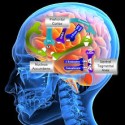Types of Treatment at Methadone Treatment Centers
Abuse of prescription pain medications and street drugs, such as heroin and opium has left many recreational users at the mercy of an addiction. Also known as opiate or narcotic drugs, battling this type of addiction requires specialized medical treatment along with ongoing support and guidance.
Methadone treatment centers specialize in treating opiate addictions using medication-assisted treatment methods. Most people who stop using opiates require this type of treatment in order to handle the withdrawal effects opiate addictions cause. Methadone treatment centers can employ different treatment approaches depending on the needs of the individual.
Medication-Assisted Treatment

The type of Methadone treatment center that works for you may vary from another user.
Methadone treatment centers use medication-assisted treatment approaches that help recovering addicts stop using and take the necessary steps needed to rebuild their lives. Methadone medication therapy has been a long-standing treatment for opiate addictions for decades. In effect, methadone helps eliminate the body’s dependency on opiate drugs so a person can deal with the issues that brought about the need for drugs.
Methadone treatment centers offer a wide range of services designed to meet whatever needs a person may have. Some of the services offered include:
- Medical care to treat health conditions, such as hepatitis, HIV/AIDS and tuberculosis caused by long-term drug use
- Identify and treat other mental health problems a person may have
- Offer education assistance
- Offer job placement assistance
As everyone’s recovery path is different, the recovery process at a methadone treatment center can take anywhere from six months to several years before a person is able to live drug-free on his or her own.
Methadone Maintenance Treatment
While the initial withdrawal stage from stopping opiate use may only last as long as 10 days, withdrawal aftereffects can last anywhere from months to years after a person’s last drug use. Methadone treatment centers offer maintenance treatment as a way to help individuals wean-off of drug effects with minimal discomforts. The overall effects of methadone on the body include:
- Withdrawal symptom relief
- Helps reduce drug cravings
- Prevents users from experiencing a “high” effect should they attempt to use drug
According to the Centers for Disease Control and Prevention, the most successful participants stay in treatment for at least a year with an overall success rate of 80 percent. Maintenance treatment involves receiving daily doses at a methadone treatment center for a minimum three to six months. After this time, individuals reach a point where methadone levels can be stabilized at a regular dosage.
Types of Methadone Treatment Settings
Methadone treatment centers can provide both round-the-clock intensive treatment through inpatient care programs or scheduled treatment help through outpatient care programs. Considering the severity of opiate addictions, anyone requiring a methadone-type treatment approach would most likely need the structured setting that an inpatient program can provide.
For highly motivated individuals or for people active in the workforce, outpatient program settings can work around a person’s schedule. Participants in both settings receive ongoing medication treatment as well as counseling services. For the recovering addict, counseling services provide the essential skills a person needs to remain drug-free and take back control of his or her life.
Resources:
Centers for Disease Control & Prevention
http://www.cdc.gov/idu/facts/methadonefin.pdf
